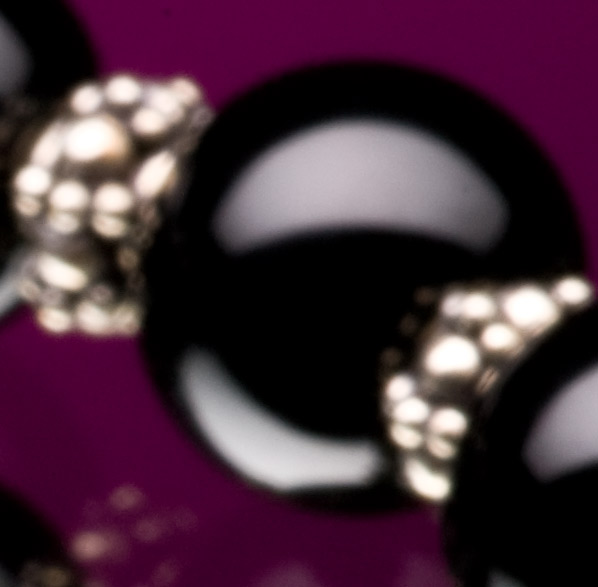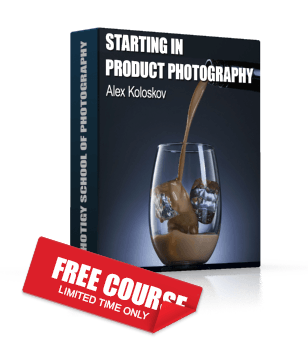Photographing jewelry:
the lighting setup, tips and tricks plus bonus video
First, he wanted a spot-like gradient background, from deep purple to complete black.
Second, the bracelets must be shoot from a frontal position with with sharp viewing angle, not a simple top-down shot. Obviously, the whole bracelet must be sharp (in focus) .
So, how do we get the first task done? Hang the bracelet on tiny fishing lines and project a spot on a dark background? Create the background digitally, after the shoot? I’m not a big fun of such massive digital post processing, I like to get done “in camera” as much as possible.
I’ve used 2 light sources ( Paul. C Buff monolights). One mirror and one white paper background. One task was left for post production in Photoshop, you’ll see what I mean later.
The lighting setup, was simple: the jewelry was placed on a mirror positioned so that it reflected the white paper backdrop when viewed from the camera’s angle. A narrow rectangular softbox was placed directly on top of the jewelry, so no light was escaping onto the backdrop behind.
Now we only need a spot (honeycomb attachment was used) need pointed at the appropriate place on the backdrop to create the desired gradient.
The same but illustrated:
Lighting schema for jewelry photography
The result seems to be good. This shot was done using Canon EF 180mm f3.5L Macro L
lens @ 1/250 sec f/25(!)
Jewelry photography with tilt-shift Canon EOS adapter
Because of the angle the camera was placed in, the required DOF was huge . I’ve closed aperture down to f/25, the maximum I can have before too much diffraction, but still… See a 100% crop from the area shown above:
Jewelry photography example 100% crop without tilt shift
This is not what I and my client was looking for. We we’re lucky enough to have a tilt-shift adapter for Canon, so this is what I was using, along with the Rodenstock APO Rodagon-N 80mm F4 lens for the next shot:
Jewelry photography example with tilt-shif canon eos adapter
100% crop from area shown above:
Jewelry shot with tilt-shift adapter for canon and Rodenstock lens attached
Yes! Quite a difference, isn’t it? This is what I was looking for. Aperture was set to f/16, and our tilt-shift adapter did a great job! Even before post-processing in Photoshop, the result is already really nice. The focus is sharp across the entire bracelet, and we have our gradient on the background.
Done? Not quite yet… 🙂
The only thing remaining is the reflection: Too much reflection from the mirror is not a good thing here. This can be fixed only in digital dark room, as there is no way I know to make blur it (or remove it) prior to the shoot. (No, dulling spray is not for this setup, the mirror’s surface must be clean and 100% transparent, as even tiny dust particles on glass will be highlighted by the top softbox and will glow as a bright star. 🙂 This is why the mirror is dark under direct light: it does not reflect any light from above toward the camera. At our given angle only the backdrop gets reflected.
Here we go, this is the final image:
Jewelry photography: bracelet on a dark background
This was exactly what we needed.
Here is one more image of this piece of jewelry from this photo session, using the same technique. You can see more in my portfolio:
Jewelry photography, image of the necklace on dark glass
P.S I do have a video that shows the setup and some shots, but isn’t quite ready yet. I hope to add it here before Thanksgiving. Stay tuned! 🙂








